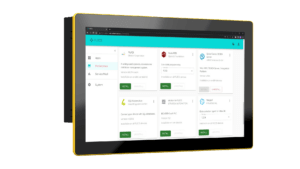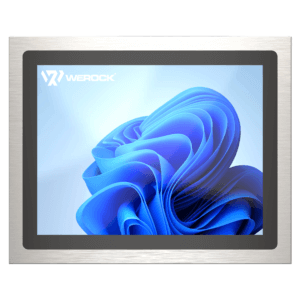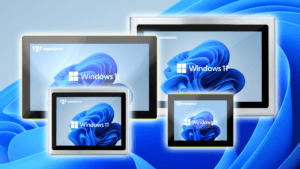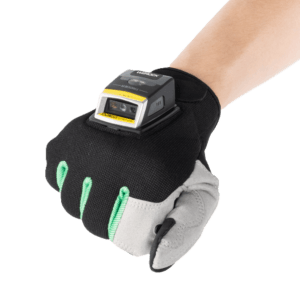It’s hard to imagine industry without powerful WLAN. But if you think WLAN is synonymous with wireless networking, you’re sadly mistaken. As with mobile communications, there are huge differences in performance, data speed and reliability.
WLAN, written out for “Wireless Local Area Network,” is the umbrella term for this wireless technology. In contrast, Wi-Fi refers to a type of WLAN that stands for an issued certificate according to the IEEE 802.11 standard. In conclusion, every Wi-Fi is a WLAN, but not every WLAN is necessarily Wi-Fi certified.
Industrial WLAN as a driver of digitization
As part of the industrial world, you are constantly faced with new challenges. Digitization is one of the gamechangers for mastering these challenges. More effective communication channels can generate significantly higher productivity in your company. In large factories, for example, you could send work orders between your employees more quickly and thus prevent unnecessary journeys. It also enables mobile operation of large machines over a long distance. Communication between different end devices also becomes much faster with a strong WLAN network. This means that your important data reaches the end user faster and doesn’t get stuck in wireless holes.
Challenges in industrial environments
From your own experience, you probably know that many factors must be taken into account to guarantee a 100% stable and reliable WLAN connection across the entire premises.
If your WLAN coverage has gaps, the connection can break down on the clients. In industrial environments in particular, there are numerous causes for this, such as interference from incorrectly occupied channels or from external sources of radio interference. But existing structures and neighboring radio networks can also interfere with the signal.
Closed vehicle cabs of forklifts or cranes can shield radio signals and result in insufficient WLAN connectivity. This is referred to as a “Faraday cage.” Since many industrial applications rely on constant connectivity, a stable connection is particularly essential for you here.
Existing structures, such as storage racks and their contents, can also be a major interference factor. Metals or water, for example, are not very radio-permeable. If the signal interference cannot be clearly identified, a WLAN radio survey and mapping usually helps to isolate the problem.
So what options do you have to work around all these problems? The most effective method is to create area-wide access points that provide widespread WLAN connectivity in large warehouses, for example. Industry-leading companies, such as Cisco, are now using the latest IEEE 802.11ax standard . This aims to increase the data throughput per device. This helps to cope with the increasing number of devices connected via WLAN and to expand efficiency in environments with many subscribers. Thanks to the higher performance of wireless WLAN communication, you can also integrate new applications into your company, e.g. augmented reality for work support even from a distance, as well as remote-controlled cranes, autonomous intralogistics solutions and much more.
The IEEE 802.11r standard enables WLAN clients to roam quickly between WLAN access points. It speeds up the authentication process when changing access points by storing credentials on the access points before authentication.
On the safe side with Wi-Fi 6 certified clients
The IEEE 802.11ax WLAN standard is marketed by the Wi-Fi Alliance as Wi-Fi 6. It provides the capacity, efficiency, coverage and performance that users need today in the most demanding Wi-Fi® environments. Wi-Fi 6 certified networks ensure that in locations with hundreds or thousands of connected devices, each connected device delivers optimal performance. This applies, for example, to industrial enterprise networks that use time-critical, high-bandwidth applications. Wi-Fi 6 certified devices meet the highest standards for security and interoperability. At the same time, they enable lower battery consumption, making them a solid choice for any environment.
IEE 802.11ax brings the biggest advantage with a completely new type of data transmission for WLAN – Orthogonal Frequency Devision Multiple Access (OFDMA). This divides a communication channel into up to nine subchannels, which can be distributed to different subscribers. In this way, more users can be served in a shorter time and data packets can be transmitted more efficiently. This is particularly relevant for applications that require a particularly fail-safe data connection. If faults occur, the connection must not be interrupted, but must continue to run constantly. In the worst case, data communication could otherwise be interrupted and cause danger or downtime.
For a product to be considered Wi-Fi certified, it must first undergo rigorous testing in independent test labs. Only after successfully passing the tests does the manufacturer or vendor receive the right to use the “Wi-Fi Certified” certification logo on the product. The certification recognizes that a product has been tested in numerous configurations with a variety of other devices to verify interoperability with other Wi-Fi certified devices operating in the same frequency band . Our Rocktab Ultra U200 series is already fully equipped with Wi-Fi 6 certifications.
Non Wi-Fi 6 certified products or even products of old Wi-Fi generations have less bandwidth and are a lot slower. You can see the differences between the current Wi-Fi generations in the table below.
| WLAN-Generation | Wi-Fi 4 | Wi-Fi 5 | Wi-Fi 6 |
| IEEE-Standard | IEEE 802.11n | IEEE 802.11ac | IEEE 802.11ax |
| Frequency range | 2,4 + 5 Ghz | 5 Ghz | 2,4 + 5 + 6 Ghz |
| Maximum transmission rate | 600 MBit/s | 6936 MBit/s | 9600 MBit/s |
| Maximum transmitting/receiving units | 4 x 4 | 8 x 8 | 8 x 8 |
| Maximum bandwidth | 40 MHz | 160 MHz | 160 MHz |
| Maximum range | 100m | 50m | 50m |
Playing in the top WLAN league with the Rocktab Ultra U200 series
Are you still looking for rugged handy tablets that can take your business to the next level? Then you are completely right with the Rocktab Ultra U200 series. Thanks to the modular design, you stay on the very cutting edge of technology, even if Wi-Fi 6 is no longer “state of the art”! The Wi-Fi 6 certified tablets grant seamless roaming of different radios thanks to the integrated 802.11r standard and therefore offers ultra-fast connectivity. Very few rugged tablets have this modularity. Most have the chip soldered onto the motherboard and the antennas hardwired.
If you need even more powerful technology at a later date, it can be easily implemented through our service. The Rocktab U200 series is currently the ultimate in WLAN connectivity and should therefore not be missing in any digitalized industrial company.
More information about the Rocktab Ultra U200 series is available at https://www.werocktools.com/products/rugged-tablets/











